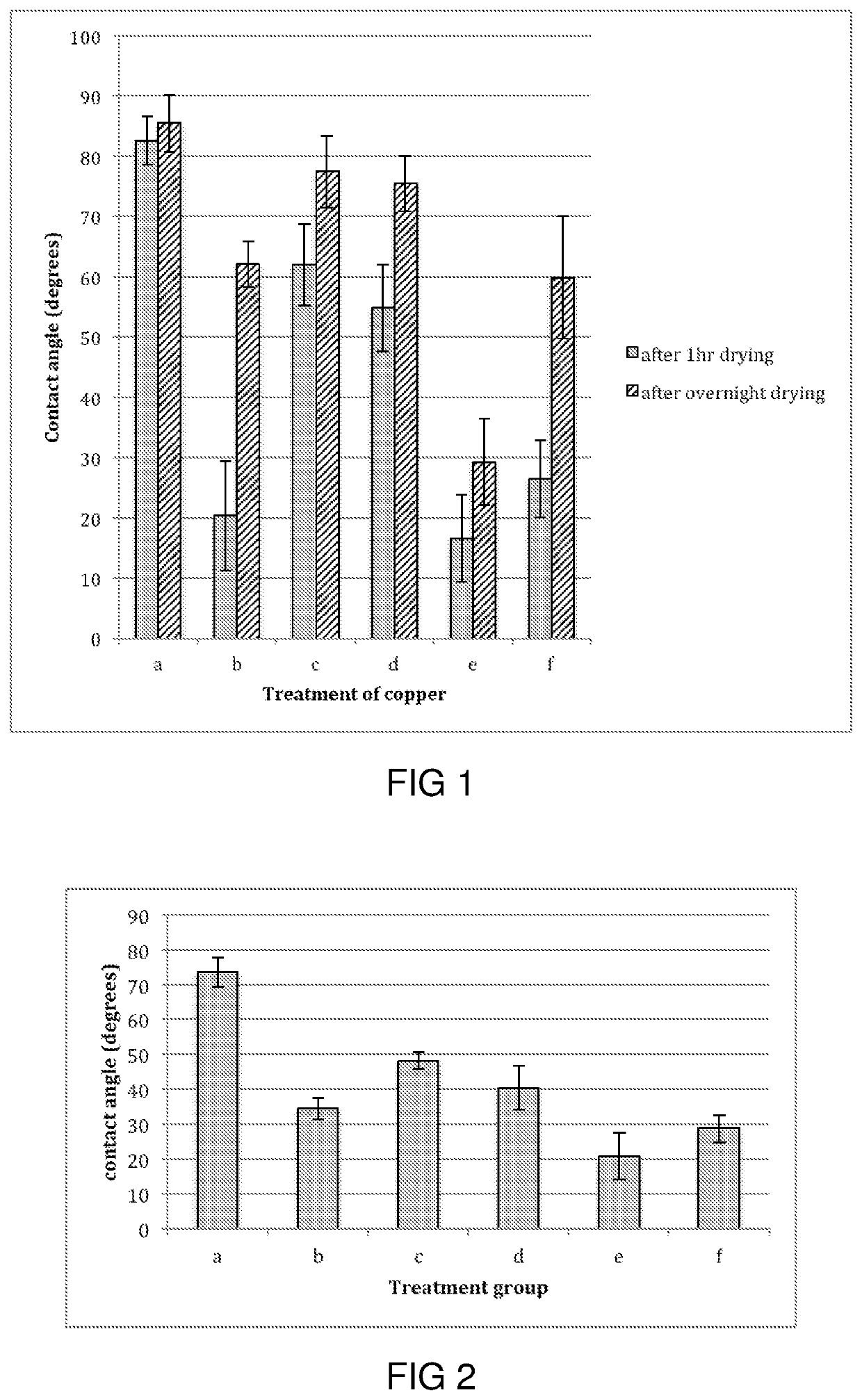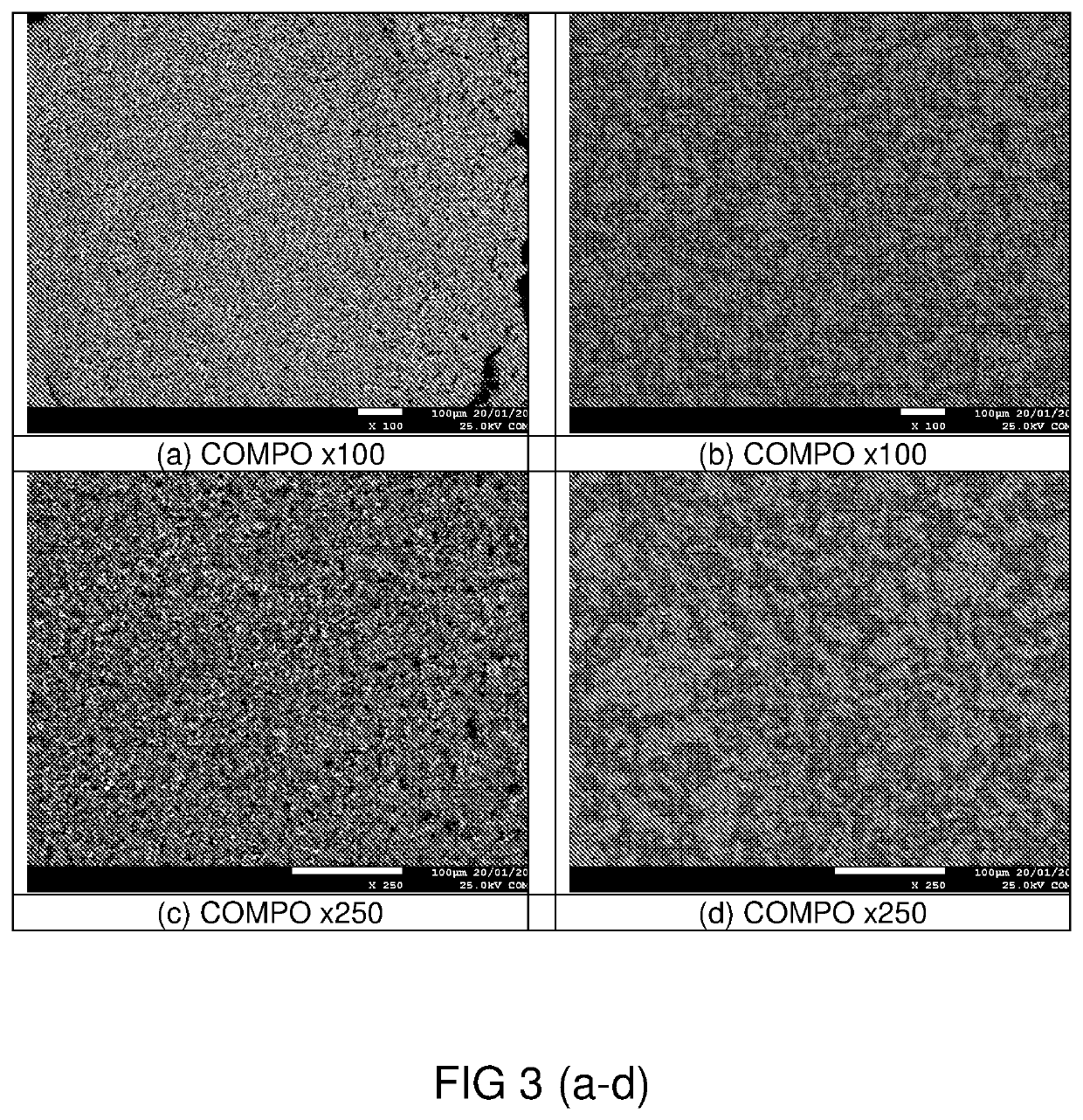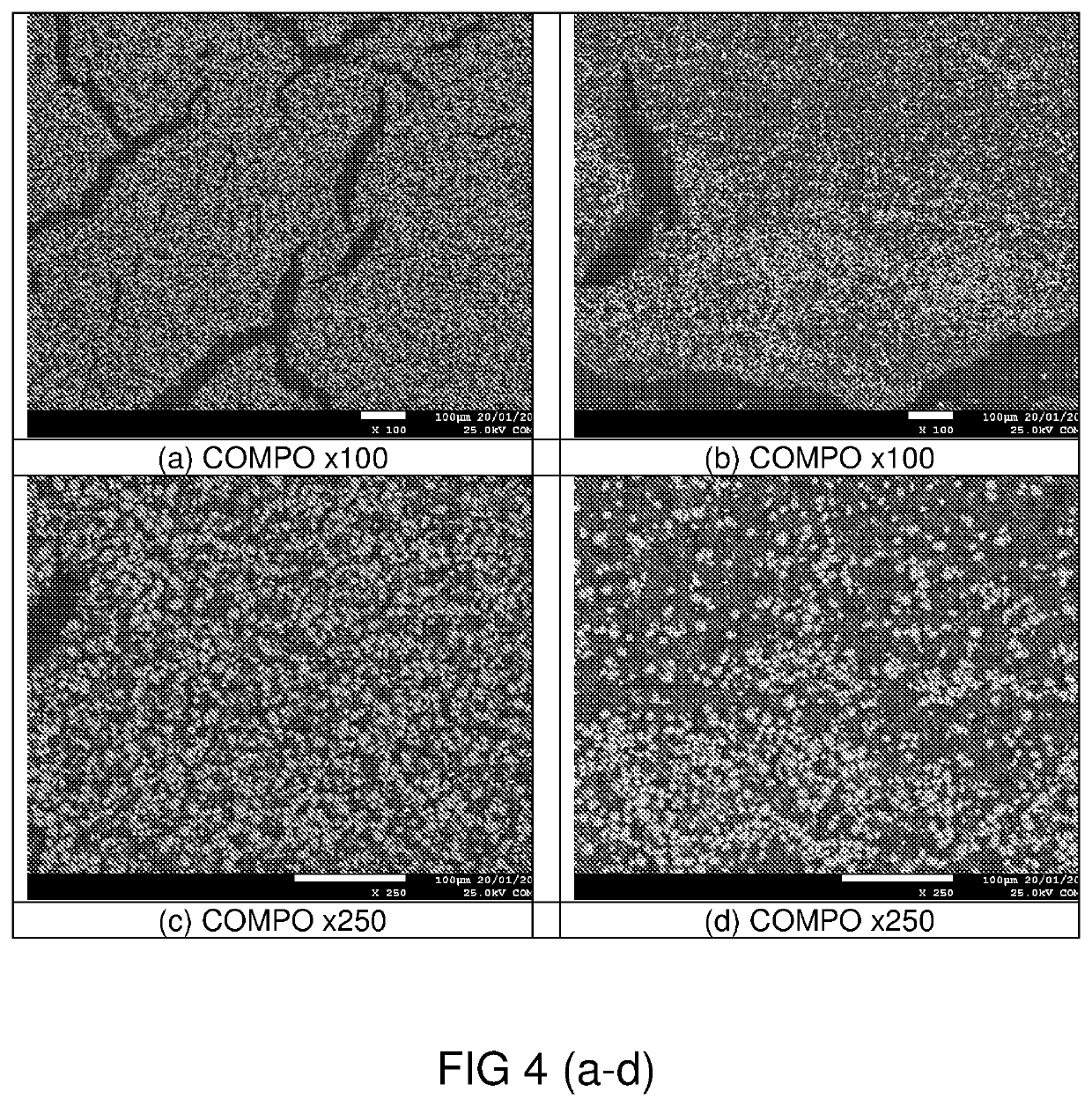Conductive composites
a technology of conductive composites and composite materials, applied in the field of composite articles and composite formulations, can solve the problems of increasing the cost of reproducibly creating composite formulations with desired properties, increasing the cost of reproducibly creating composite formulations, and challenging homogeneous composite materials, etc., to achieve the effect of effective conductive interface, improved adhesion layer, and improved strength and stability
- Summary
- Abstract
- Description
- Claims
- Application Information
AI Technical Summary
Benefits of technology
Problems solved by technology
Method used
Image
Examples
example 1
rdination Complex-Coated Silicon Nanoparticles
Preparation of Metal-Coordination Complex Solutions Using Different Salt and Base Combinations.
Solution 1
[0163]In this example, chromium perchlorate hexahydrate (45.9 g) was dissolved into 480 mL of purified water and mixed thoroughly until all solid dissolved. Similarly, 8 mL of ethylene diamine solution was added to 490 mL of purified water. The solutions were combined and stirred overnight at room temperature, and then left to equilibrate to a pH of approximately 4.5.
Solution 2
[0164]Similarly to the above, different ratios of chromium perchlorate and ethylenediamine solution can be used to generate solutions having a different pH such as pH 4.0, pH 5.0 or some other pH.
Solution 3
[0165]In this example, chromium chloride hexahydrate (26.6 gm) was dissolved into 500 mL into purified water and mixed thoroughly until all solid dissolved. The pH was adjusted slowly to pH 4.5 (or some other target pH) with 1M NaOH or LiOH.
Solution 4
[0166]In ...
example 2
rdination Complex Activated Current Collectors
Preparation of Metal-Coordination Complexes on Copper and Aluminium Current Collectors
[0168]After pre-washing with acetone and ethanol, copper and aluminium current collectors were treated with 5 mM metal-coordination complex solutions such as those described in Example 1. To obtain the required working concentration, metal-coordination complex examples using Solutions 1 to 3 were diluted in water while examples such as in Solution 4 were dissolved in isopropanol / water (1:1). The current collectors were left to stand in the various metal-coordination complex solutions for 1 hr, washed with either water or isopropanol / water (1:1), and either dried for 1 hr or overnight in a desiccant cabinet prior to further treatment.
[0169]The metal-coordination complex coated current collectors were then left to stand in polymers, particles or other components comprising active materials. As an example, in the case of polymers such as polyacrylic acd (P...
example 3
of Silicon and Carbon Particles
Preparation of Metal-Coordination Complex Silicon Particles (1-3 μm)
[0171]In this example, a 50 mM (final concentration) metal-coordination complex solution was used. Silicon (Si) powder (1-3 μm in size) was purchased from US Research Nanomaterials, USA. A 20% w / w silicon slurry was prepared by ball-milling the 1-3 μm silicon powder with the metal-coordination complex solution in an alumina jar.
Preparation of Silicon Particles (without Metal-Coordination Complex)
[0172]A 20% w / w silicon slurry was prepared by ball-milling the 1-3 μm silicon powder with ddH2O in an alumina jar.
Preparation of Composites of Silicon and Carbon Particles, with and without Metal-Coordination Complexes
[0173]Metal-coordination complex-coated and non-coated silicon nanoparticles, as prepared above, were mixed with TIMCAL Graphite & Super P Conductive Carbon Black, purchased from MTI Corporation, USA and Poly(acrylic acid) (PAA) average Mw 450,000 D, purchased from Sigma-Aldrich,...
PUM
| Property | Measurement | Unit |
|---|---|---|
| pH | aaaaa | aaaaa |
| pH | aaaaa | aaaaa |
| number average particle diameter | aaaaa | aaaaa |
Abstract
Description
Claims
Application Information
 Login to View More
Login to View More - R&D
- Intellectual Property
- Life Sciences
- Materials
- Tech Scout
- Unparalleled Data Quality
- Higher Quality Content
- 60% Fewer Hallucinations
Browse by: Latest US Patents, China's latest patents, Technical Efficacy Thesaurus, Application Domain, Technology Topic, Popular Technical Reports.
© 2025 PatSnap. All rights reserved.Legal|Privacy policy|Modern Slavery Act Transparency Statement|Sitemap|About US| Contact US: help@patsnap.com



